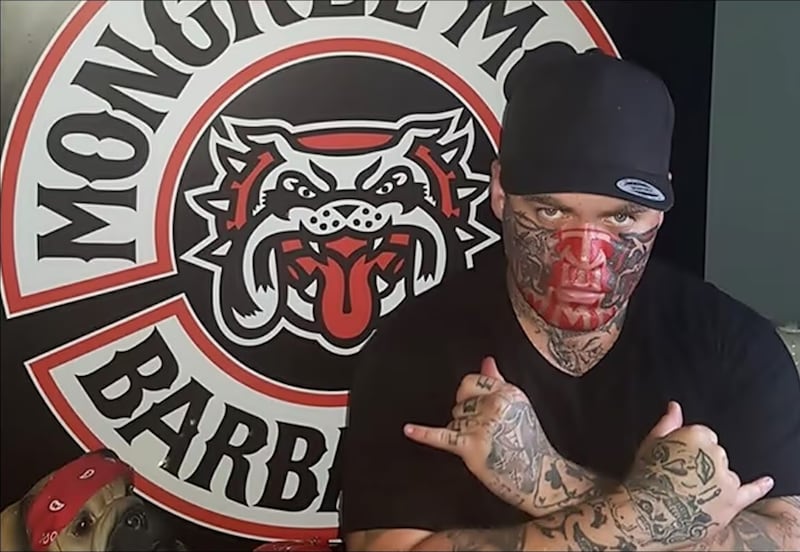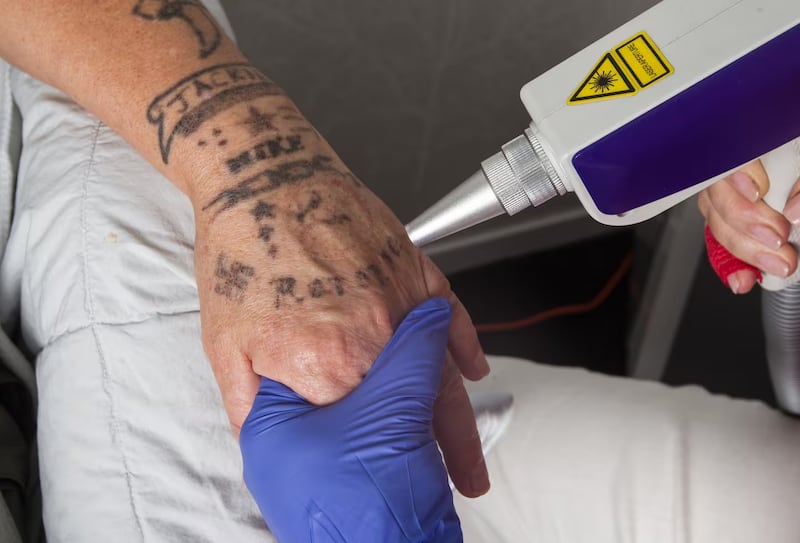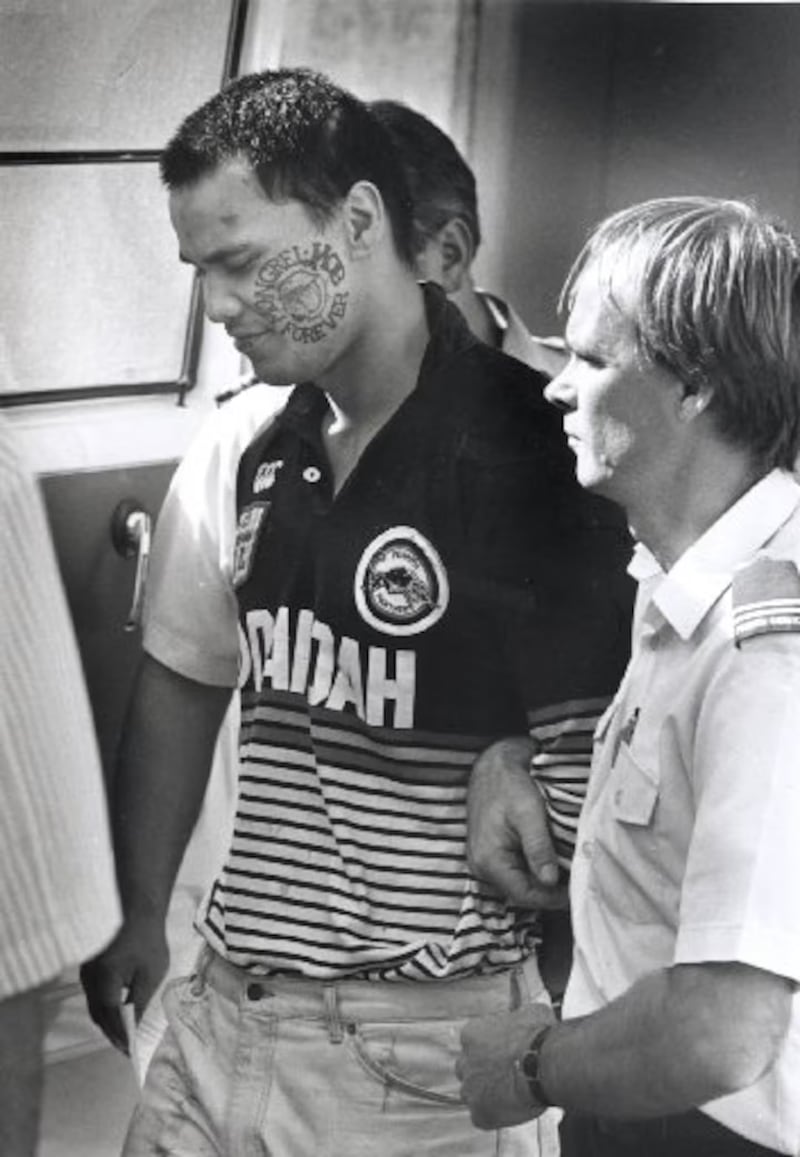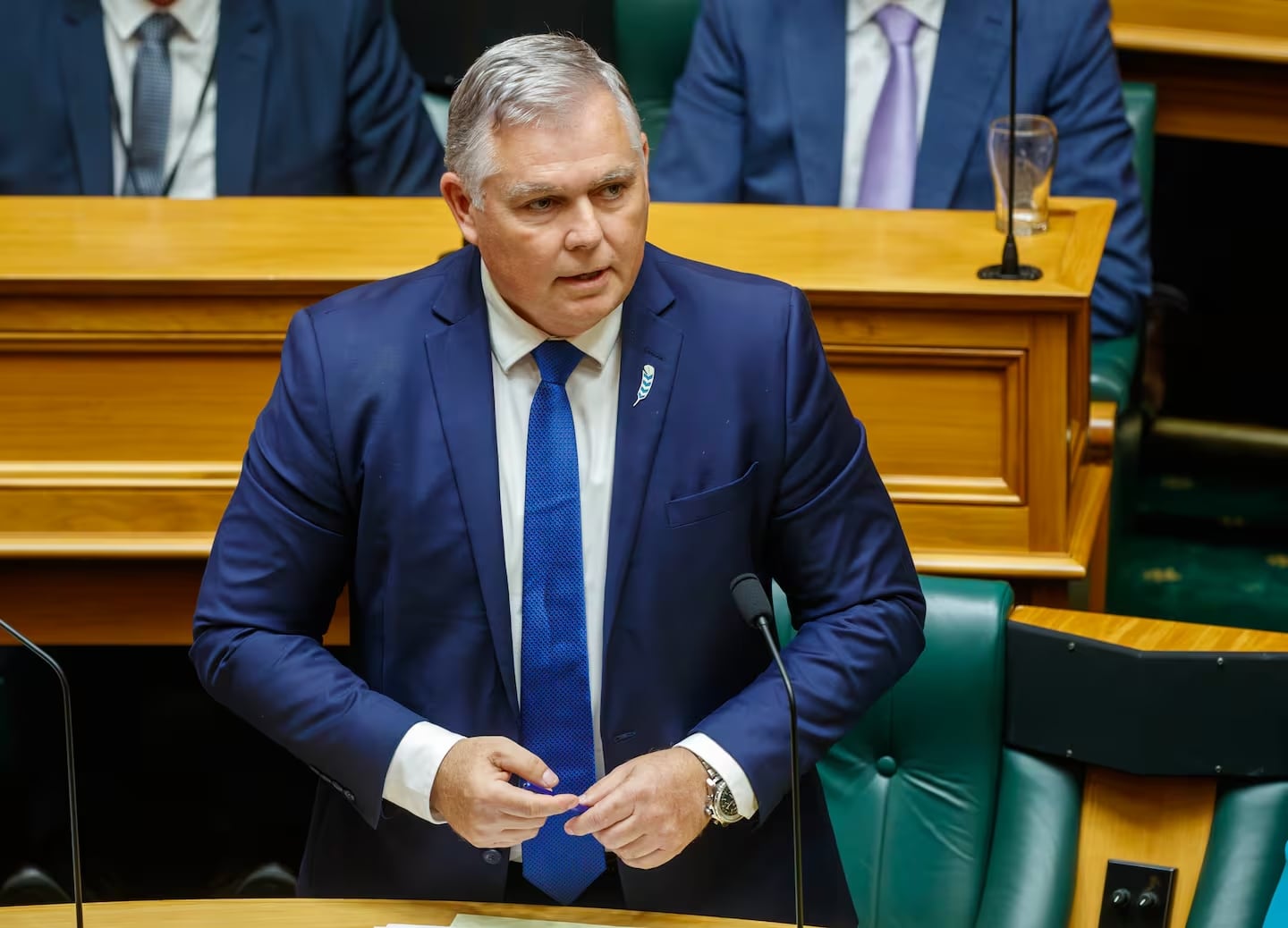This article was first published for Open Justice by NZME.
A $100,000 funding pool that allows prisoners to remove their tattoos looks set to run dry due to the scheme’s popularity - leaving some inmates worried about whether they’ll be able to complete the process.
More than $73,000 of the Department of Corrections-funded initiative, which was quietly made available last year, has been used already. However, that money was supposed to last three years and there’s no concrete plans to see it topped-up.
One of those approved for six sessions to remove extensive Mongrel Mob face tattoos is Te Kahui Kani who got his first tattoo - a bulldog on his cheek - when he was 27.
“I was still a prospect at the time and when you’re prospecting you’re expected to do anything and everything,” he told NZME.

“It was a privilege for me at the time… it’s a symbol that you’re fully entrenched in that life. But now that I’m trying to pull away from that life, it’s blocking my progress.”
Since that first bulldog on his cheek, Kani has had almost his entire face tattooed but saw an opportunity to have it removed when the funding became available to him.
“It hurts a hell of a lot more coming off than getting them done,” he said.

Kani has been told he’ll need roughly 50 sessions to remove it all from his face completely but he’s only funded for six.
He’s not sure what he’ll do when that comes to an end as he doesn’t have the money to pay almost $450 per session on his own.
Helena Carter of deINK Tattoo Removal is a laser technician approved to perform the procedure in prison and worked with Kani on his face while he was still serving time.
At the moment she has some 50 clients but was under the impression that the $100,000 was an annual amount rather than the three years it’s meant to cover.
“It’s simply not enough,” she said.
“We have people wanting tattoo removals who can’t get it. The need is huge and we’re turning people down.”
Carter said that there were kids getting tattoos done in prison that essentially locked them into a life of crime. It was hard to leave a gang once a person has its emblem permanently inscribed on their face, she said.
Subsidising the removal of a prisoner’s often gang-affiliated ink has been somewhat of a political hot potato over the last two decades with successive Governments implementing and then scrapping various funding initiatives.
After it was revealed taxpayers spent almost $250,000 between 2001 and 2004 on tattoo removals, including $4500 for Mobster John Gillies to have a “Mongrel Mob Forever” and bulldog tattoo removed from his face, the scheme was lasered off the Government’s ledgers in 2006.
However, NZME revealed last year that despite Labour claiming in 2019 that the party wouldn’t revive the scheme $25,000 had been set aside for young offenders in the Lower North Island to have face, neck and hand tattoos removed to improve their access to employment.
Then, last year Corrections confirmed to NZME that a further $100,000 had been set aside to subsidise laser treatments for prisoners and former inmates across the whole country.
“One area that can create a significant barrier to someone seeking employment and successfully reintegrating into the community when they leave prison can be their tattoos,” Corrections’ commissioner for custodial services, Leigh Marsh, said.

“Our tattoo removal programme provides access to funding to assist people to have tattoos on their face or hands removed. This concept is particularly for tattoos that are gang-related, but include tattoos of all kinds.”
Marsh said since the scheme began in February last year, Corrections had received 179 referrals for people wanting to shed their ink, of which 136 had been approved.
“Preference is given to facial or hand tattoos, but other areas, especially highly visible locations, can be considered on a case-by-case basis,” he said.
“We ask for the reason for removal, what the person’s previous behaviour has been like, and what their progress is on their offender plan. This all helps us to decide whether the person is genuine in their request for us to fund the removal.”
Marsh said that people can be declined for a variety of reasons including their tattoos not being gang-affiliated, not being in a visible place or there being no link between it being removed and their rehabilitation.
“As we only have a limited pool of funding we are being careful to ensure it is going to people who genuinely want their tattoo removed to enable a better life and greater reintegration and employment prospects.”
Corrections Minister Mark Mitchell said he was a strong supporter of the programme.
“Any initiative which supports people to reintegrate back into society, away from gang life and crime, can only be viewed as positive,” he said.
“The demand for the service is encouraging, and while the current level of funding has not been raised with me as an issue, I would be open to such a discussion.”
Since being elected National has announced a range of initiatives to target gang-related crime including a legislative ban on gang patches, which is currently before parliament, and the formation of a police-led National Gang Unit.
Mitchell said the government’s focus was to give former inmates the best shot at rehabilitation and pointed to $78 million worth of funding to allow remand prisoners to access rehabilitation.
“We want gang members to see a better path outside of a gang,” Mitchell said.
“The best way we can do that is to make gang life unattractive to gang members and young people.”
By Jeremy Wilkinson for Open Justice.


